On This Day…April 19th
The USS Iowa ( BB-61) was decommissioned in Mar 1949, but the war in Korea brought her back into service in Aug 1951 where she was the flagship of the Seventh Fleet under Vice Admiral Robert Briscoe. Her 16 inch guns regularly bombarded North Korean and Chinese targets before she left the theatre in October 1952.
Iowa was placed in reserve in February 1958, but recommissioned (again) in 1984. On 19th April 1989, a massive explosion onboard killed 47 men (below).
The damage was contained by flooding the number two powder magazine, a strategy deployed for decades. The cause of this explosion was never determined for certain, though static electricity and lose powder is believed to be the cause today. Turret number two, damaged during the explosion, was never repaired when she was decommissioned, for the final time, in 1990.
Iowa is now anchored in San Pedro at Berth 87, California, United States.
Thanks to Tom Bebout for writing the following...
“At about 5 a.m., 700 British troops, on a mission to capture Patriot leaders and seize a Patriot arsenal, march into Lexington to find 77 armed minutemen under Captain John Parker waiting for them on the town’s common green. British Major John Pitcairn ordered the outnumbered Patriots to disperse, and after a moment’s hesitation the Americans began to drift off the green.”
“Suddenly, a shot was fired from an undetermined gun, and a cloud of musket smoke soon covered the green. When the brief Battle of Lexington ended, eight Americans lay dead or dying and 10 others were wounded. Only one British soldier was injured, but the American Revolution had begun.”
‘E-RAT-ICATOR’ - Lockheed/Vega B-17GFlying Fortress (42-39970) of 730th BS, 452nd BG, 8th AIr Force. Lt. Ford in cockpit on April 19th, 1943. She survived the war, having flown 128 missions.
Lieutenant General James Doolittle being presented a plaque containing a fragment of a wrecked B-25 bomber that had participated in the Doolittle Raid. Miami Beach, Florida, United States, 19th April, 1947.
Vought XF4U 1 Corsair prototype (BuNo 1443) on a Compass Rose in an unidentified location - photo taken 19th April 1941.
Beautifully shot photo of US sailors enjoying some well earned relaxation between the Marshall Islands and Marianas campaigns. April 18th, 1944. Note the Carriers in the background.
Northrop Black Widow at Hickam Field, Hawaii On April 19th, 1944.
‘Shack Rat’, B-24H Liberator (s/n 42-52566) with the 786th Bomb Squadron, (446th Bomb Group) 8th AirForce.
Damaged by flak on a mission to bomb the airfield at Gutersloh on April 19, 1944, she was totally destroyed in the subsequent crash landing returning home to Attlebridge air field.
The same aircraft in the photo below shows a 'headless' woman in the nose art - an indication that the artwork was applied in the US before departure for the ETO.
On arrival to the U.K., aircraft were sent to BAD 2 at Warton for theatre modifications such as the blown navigator's window and pilot side armour, the latter seen above covering covering the girl's head. Here she is below with the artist’s work restored...
Great shot of a Curtiss P-40E Kittyhawk of RCAF (No. 111 Squadron) being recovered from a crash site in Kodiak, Alaska, 19th of April 1944.
Three German Neubaufahrzeug heavy tanks in Oslo, Norway, 19 April, 1940.
April 19th is the birth date Erich ‘Bubi’ Hartmann, the highest scoring ace.
His first engagement with the Soviet airmen told him not to underestimate them; his Bf 109 was shot up (not by any means for the first time) and he was lucky to survive a belly-landing.
It took the veterans of 7./JG 52 a lot of hard work to teach the young Hartmann the true nature of dog fighting. It was with the JG 52 that he got the nick-name "Bubi" (‘Little Boy’, due to his boyish looks). Hartmann achieved his first aerial victory against an Il-2 of Soviet Union on 5th of November 1942, but he got himself shot down...again. It was not until on his 41st combat mission, on 27 January 1943, that Hartmann managed to down his second Soviet aircraft.
In March 1943, Oblt. Walter ‘Graf Punski’ Krupinski took command of 7./JG 52. He was a true maverick in the sky, and all the NCO veterans refused to serve as his wingman, with Hartmann eventually drawing the ‘short’ straw.
Krupinski never lost an opportunity to engage in air combat, and on repeated occasions he led Hartmann into battle against overwhelming odds and in tactically poor situations.
Flying together with Krupinski meant dogfights in almost every mission, and slowly Hartmann's victory tally began to rise. Hartmann and Krupinski managed to get themselves shot down several times, and apparently, listening in to Hartmann and Krupinski’s radio communications was a favoured pastime of other pilots - as much for the colourful language and humour as for their heroic exploits.
On 25 May 1943, when Hartmann was downed for the fifth time (he was rammed by or collided with a LaGG-3) he suffered a knervous breakdown’, and was sent back to Germany to rest. Despite his father telling him that Germany had no chance to win the war, Hartmann returned to the Eastern Front in June 1943, hoping to prove that his father was wrong.
It was in this period that Hartmann really took off (apologies, awful pun). With lessons learned over 180 combat missions, he became utterly at one with the Bf 109, a perfect synchronised unit of man and machine. Against Soviet pilots with poor equipment and worse training, there was no match.
Between the 1st and 20th August 1943, he carried out 54 combat sorties and shot down 49 Soviet aircraft. This run ended on August 20, when he was shot down twice. On the second occasion, he went down in Soviet-held territory, and although he was captured, managed to escape by feigning injury to be taken to an infirmary, and make it back to his own lines.
His Soviet enemies soon learned to fear the pilot with the “Black Tulip” painted on the cowling, and nick named him ‘Cherniy Chort’ - the ‘Black Devil’; in fact, the Soviet High Command put a price of 10,000 rubles on his head.
Near the end of WWII, in early May 1945, the Luftwaffe command ordered Major Hartmann to fly to the British sector and surrender. He disregarded this order, because he felt responsible for the Jagdgeschwaders pilots, ground crew and other civilians who had joined the Geschwader, mainly concerned that they not to fall into Soviet hands. Hartmann had an especially close relationship with Heinz Mertens, his crew chief (who, when hearing Bubi was shot down behind Soviet lines, as described above, set out with some water, supplies, and a gun to rescue him!).
Hartmann led the Geschwader west and on May 8th, 1945, the soldiers and civilians surrendered to US troops in Pisek (Czechoslovakia). However, Hartmann did not know that an agreement had been reached that prisoners taken by the Americans east of Pilsen in Czechoslovakia, were to be handed over to the advancing Russians.
So, on May 17th, the US Army delivered all the Geschwader personnel and civilians to the Red Army and as with all POWs, Hartmann was deported to the Gulags in Siberia, where he was sentenced to 25-50 years of hard labor for ‘war crimes’.
Despite the Russians offering him his freedom if he would help them build the new East German Air Force, Hartmann point blank refused. In fact, it was only after Chancellor Adenauer of the FDR of Germany personally visited Moscow in 1955 to arrange for his release that a thin and haggard Erich Hartmann was released after 10 years in the awful conditions of the Gulags.
Hartmann quickly regained his health and joined the new West German Air Force in 1956 where he contributed to the build-up of new fighter unit and three years later he was given command of the Bundesluftwaffe’s first all-jet division: The Jagdgeschwader 71 "Richthofen".
Hartmann had the noses of their Canadair F-86 Sabres painted with the distinctive black tulip design he used on the Bf109s in the old 9./JG52 - once more, the famous ‘Black Tulip’ was on the nose of a German fighter plane.
Hartmann was never a diplomat and always spoke his mind. In the early 1960s, he vigorously opposed the Bundesluftwaffe's purchase of the US Lockheed F-104 ‘Starfighter’. Bubi thought the aircraft was unfit for purpose and dangerous, especially for the inxperienced new pilots. His misgivings were ignored by the politicians who badly wanted this new super-fighter. Ultimately, Hartmann’s worries proved true when over 100 German pilots were lost in F-104-related accidents.
Hartmann was ‘persuaded’ into early retirement in 1970 with the rank of colonel. He died September 1993.
Launching of USS Canberra, Bethlehem Steel Company Fore River Shipyard, Quincy, Massachusetts, United States, 19th of April, 1943.
Los Negros, Admiralty Islands, New Guinea, on 19th April, 1944. No. 79 Squadron RAAF Spitfire Mk Vc damaged as a result of blow-out of a tyre on landing after returning from a convoy patrol over the Bismark Sea. The pilot, 407778 Flight Lieutenant R. M. (Max) Brinsley DFC, Acting Commanding Officer, was unhurt and the aircraft was repaired. Note the B24 Liberator of the 13th US Army Air Force (background) which had crashed on take off some hours earlier with a full load of bombs and fuel on board.
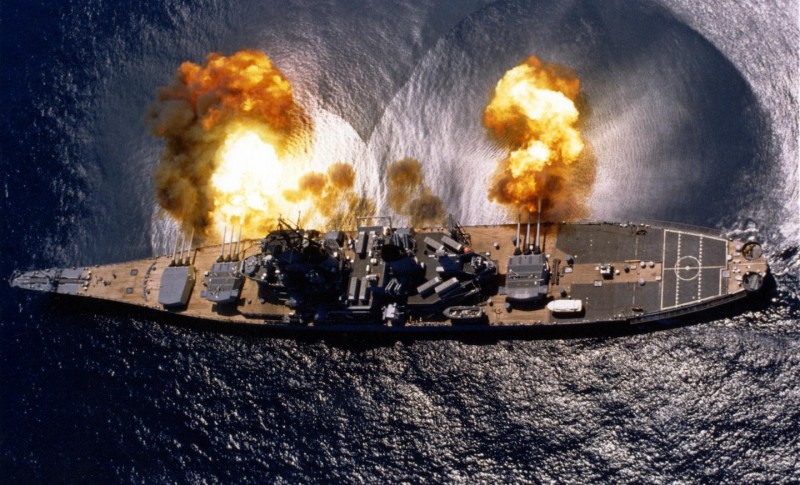
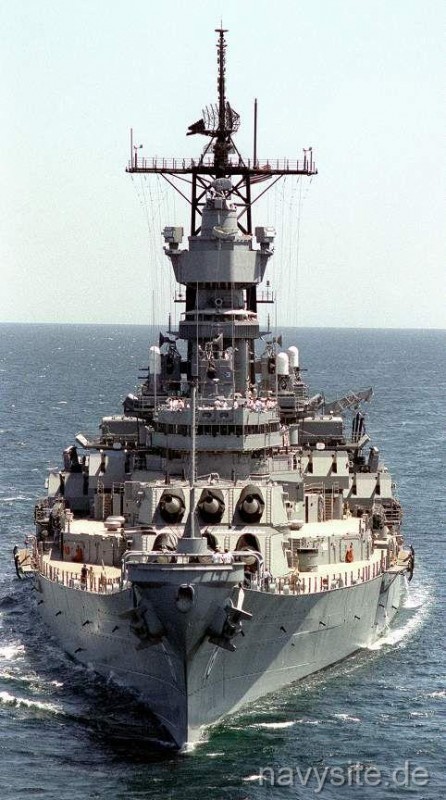
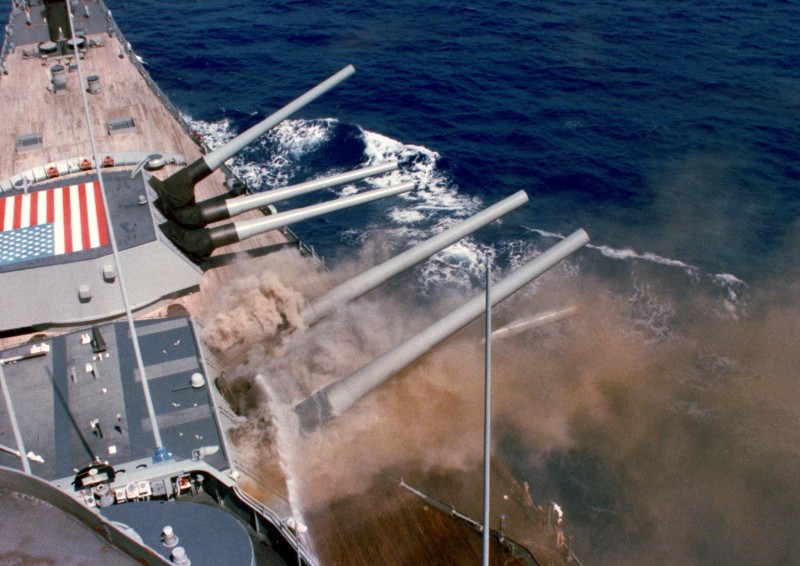
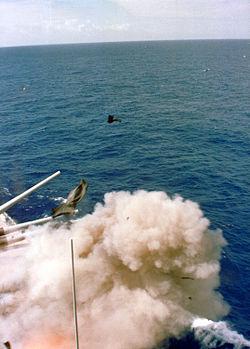
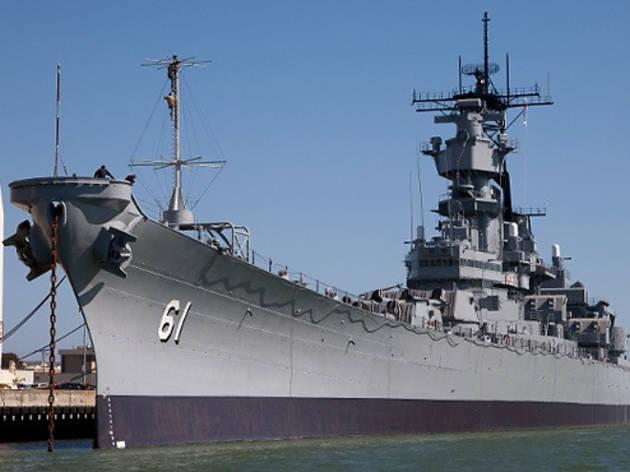
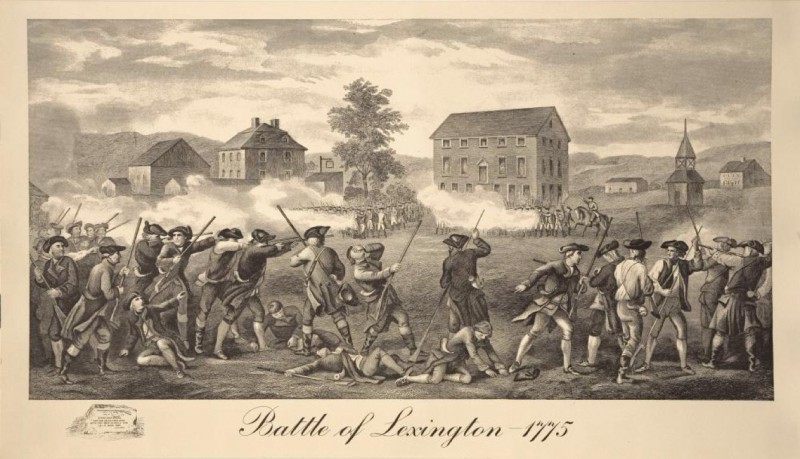
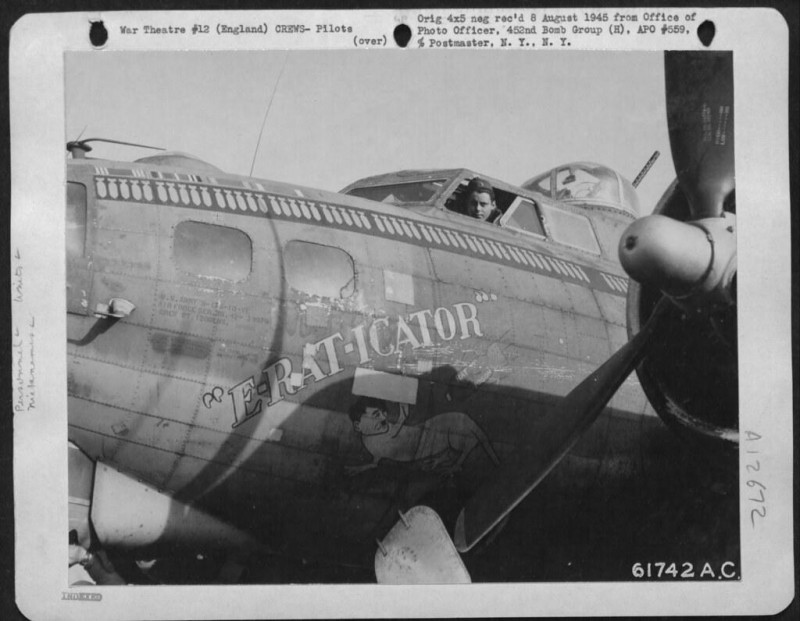
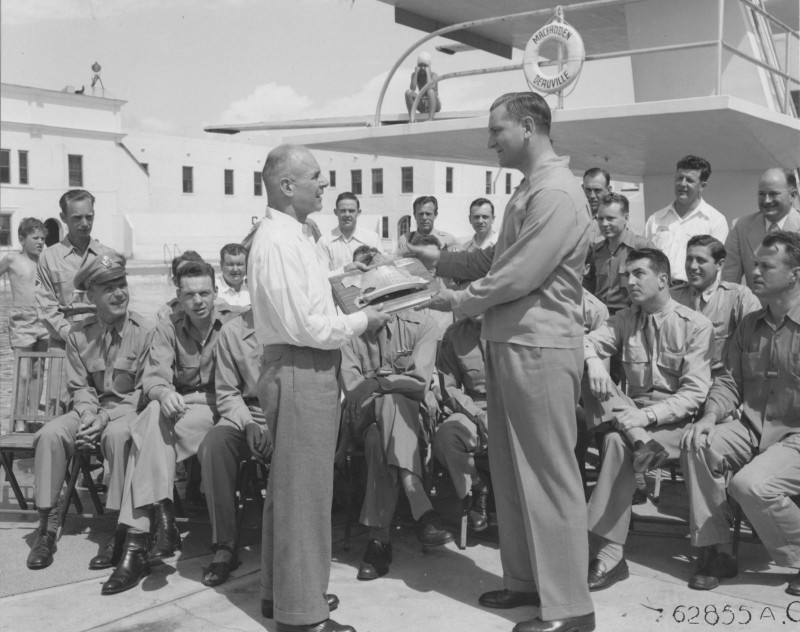
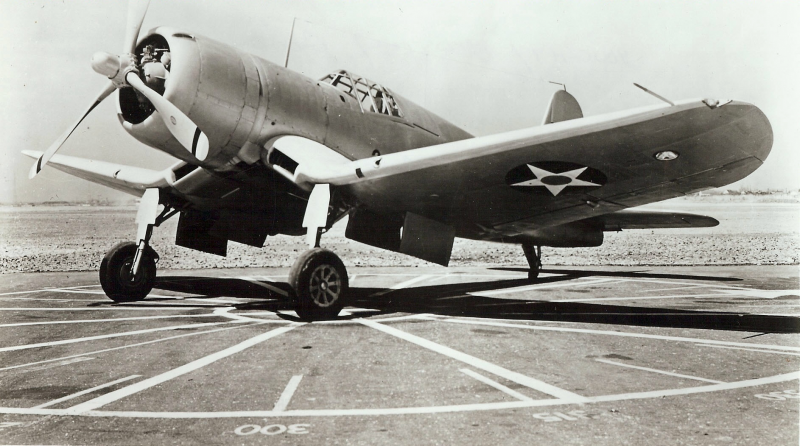
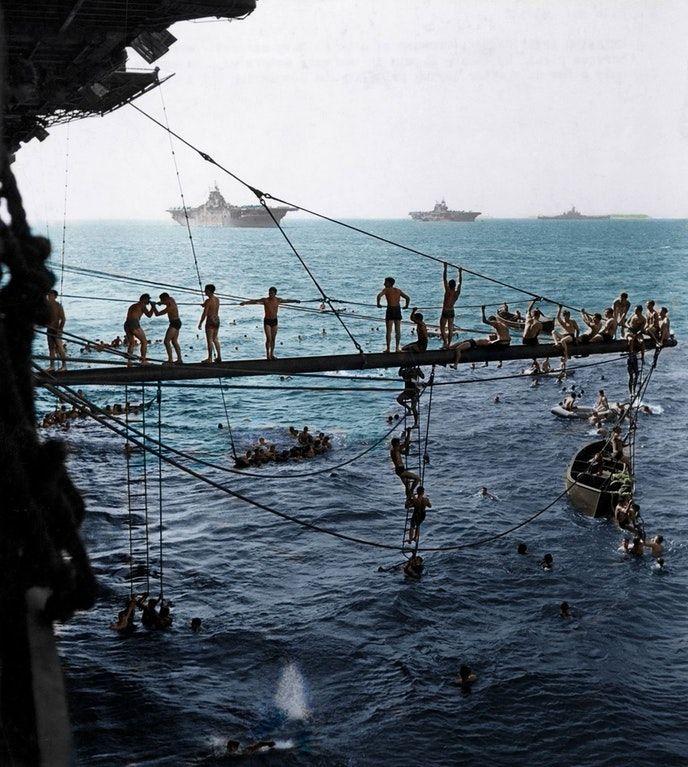
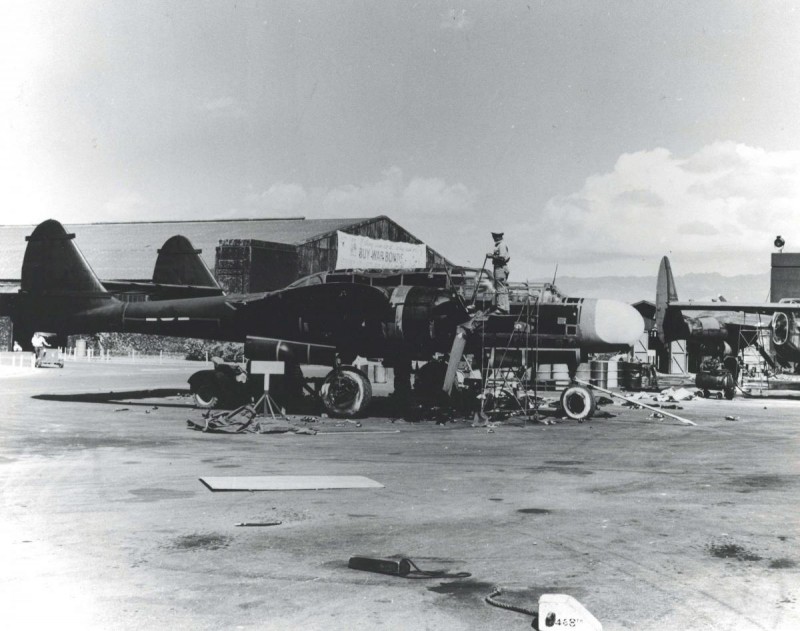
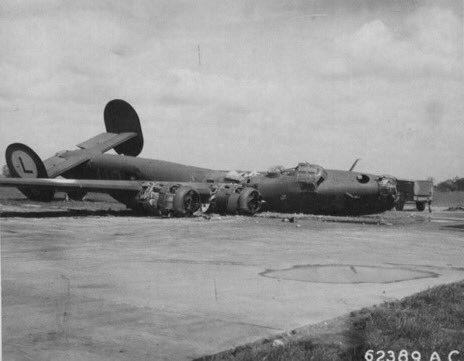
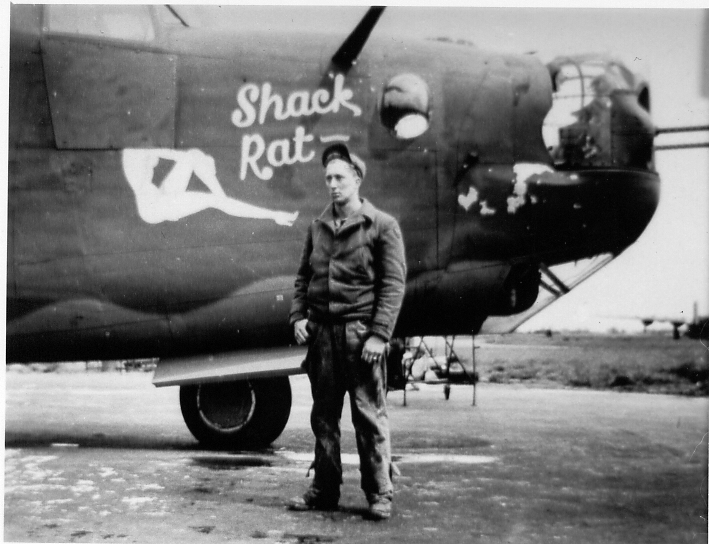
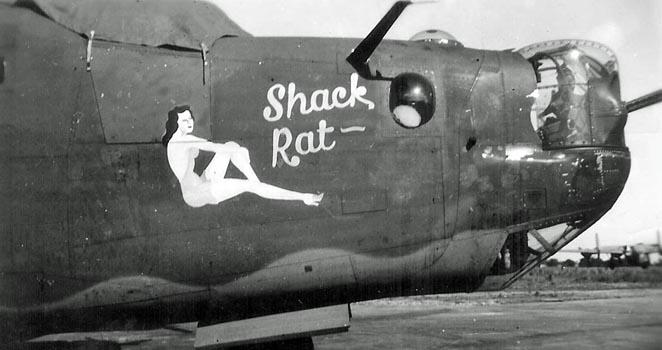
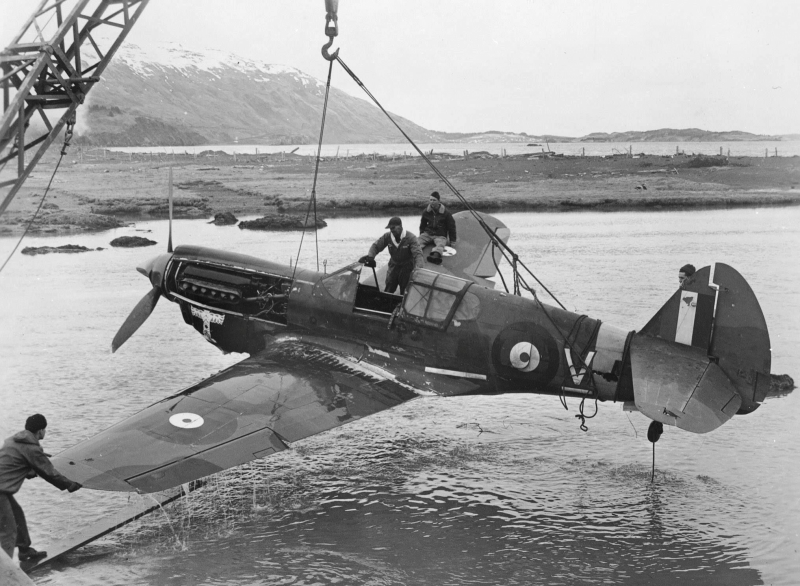


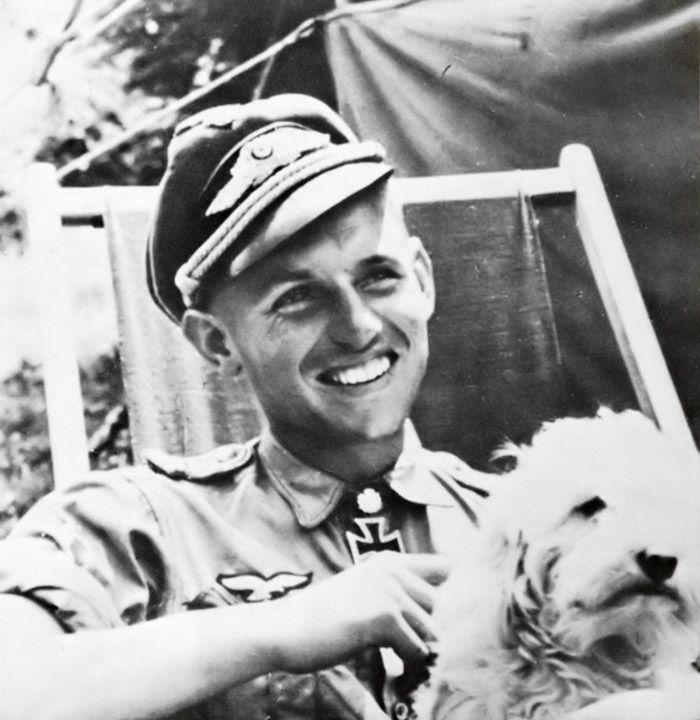
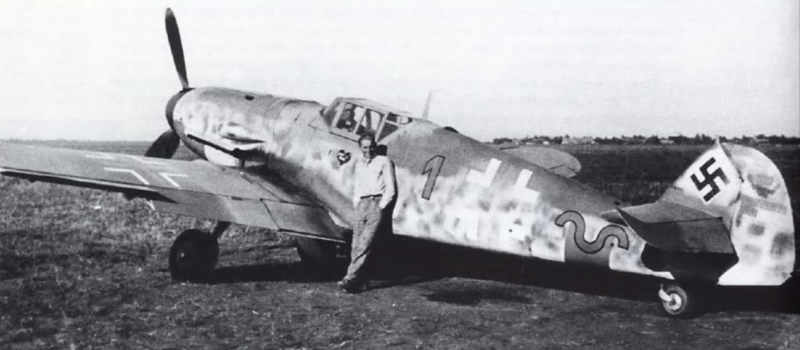

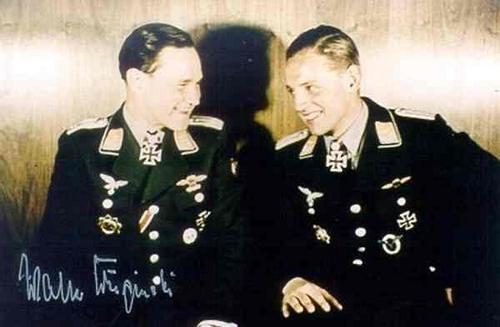
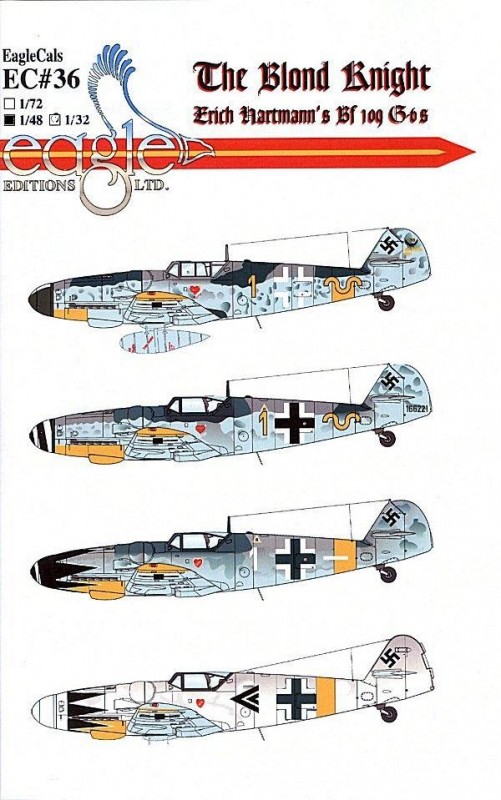
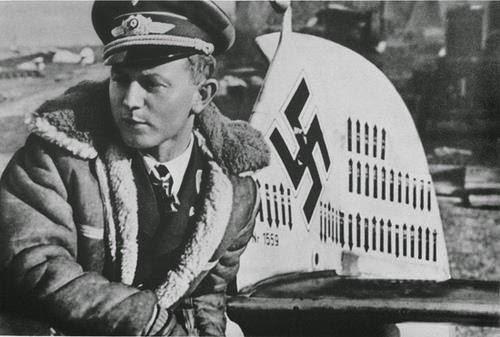
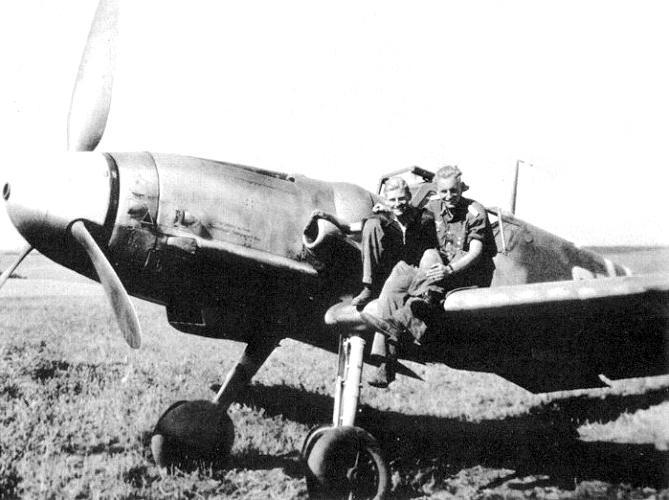
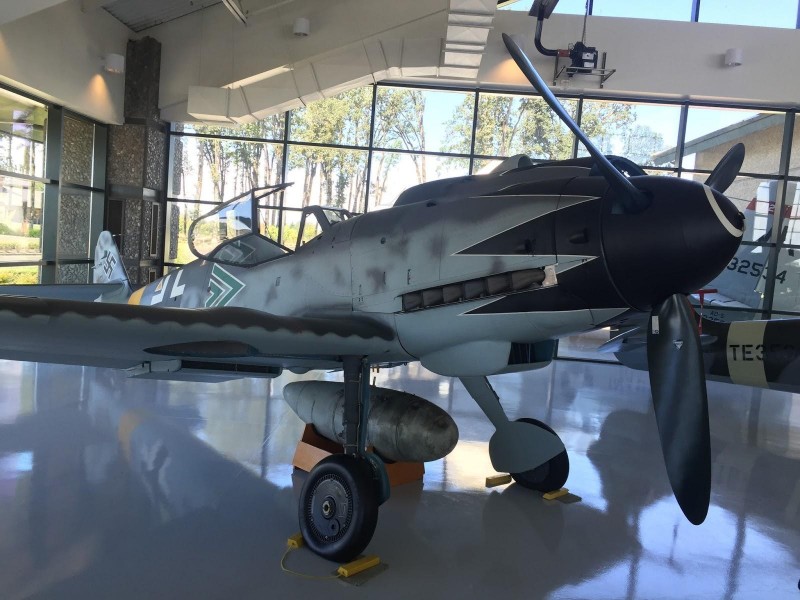
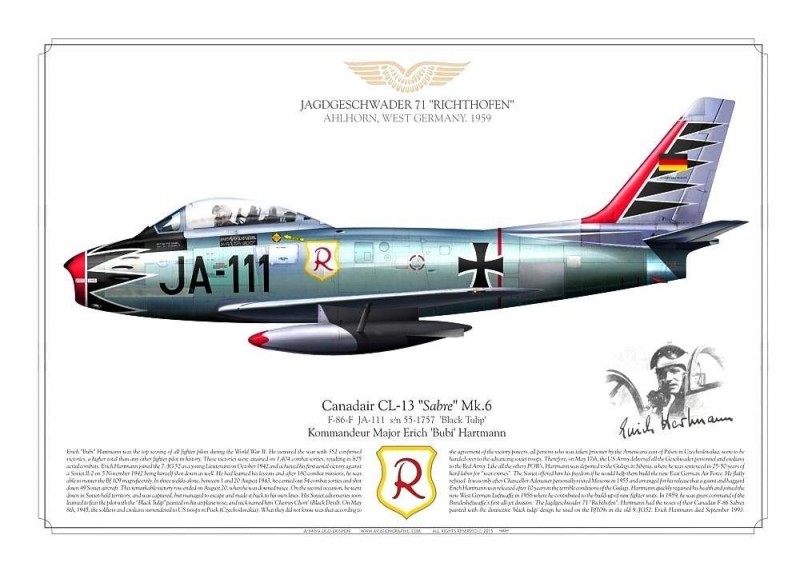
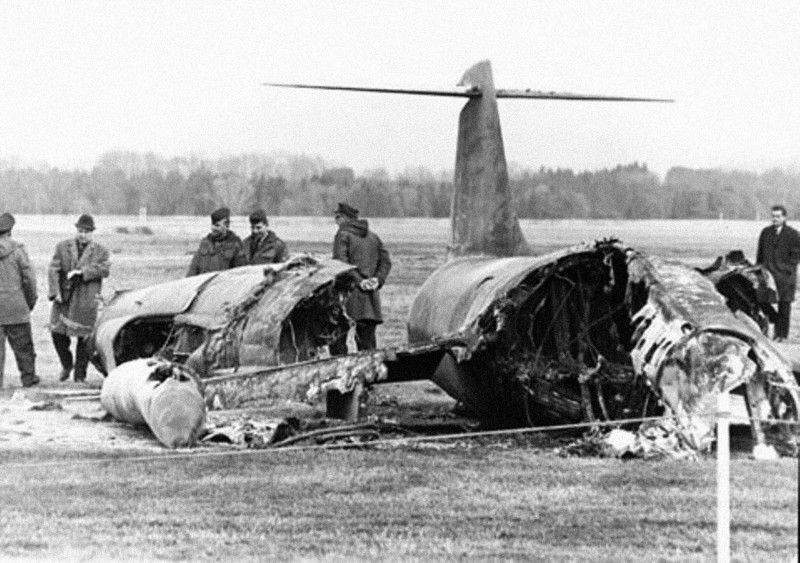

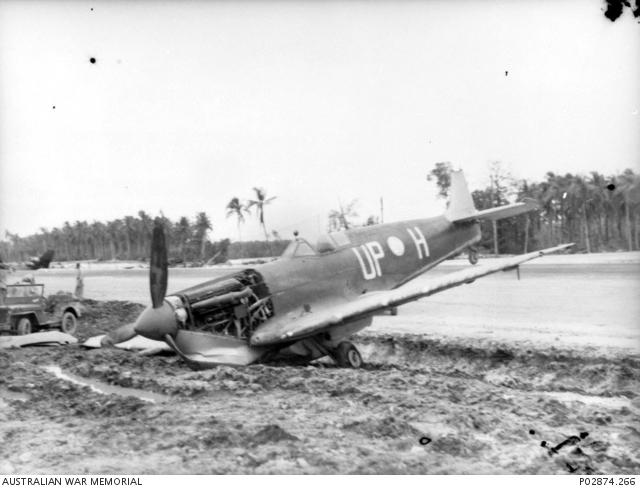
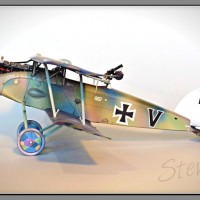

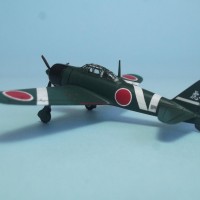

David, today you nailed also some pre WW2 narratives, wich is a welcome feature imo. The story of Bubby Hartmann (like others you deservedly told in past editions) is vast and rich in events and anecdotes, and yet you managed to squeeze so many in a short article. Just one niggle, there’s a photo of Walter Oesau amidst them, wich I believe is unitentional. Forgive me if not so. Please keep OTD going!
Pedro - what great spot. That is, of course, Oesau - I have several (possibly hundreds) photos of young Germans beside their tail fins, and was in a hurry getting this post out. Below is the photo I had meant to insert...
Thanks Pedro - and hope you have a great long weekend.
One of my Uncles served on the USS Canberra in the late 1950's. It was named in honor of the HMAS Canberra after her loss.
Nice pics and write up on Hartmann, however, the Battle of Lexington occurred on April 19, 1775, not 1717. I realize that date is not one you cousins from across the pond are fond of remembering.
Fixed, Tom. As a Scot, we have our own civil war dates that resonate even within these isles.
Bravo, David! Another weiner, for sure! I mean, Winner!
Thank you, David, also for that very interesting short biography of Erich Hartmann!
Great stuff gain. There is a two-part interview with Hartmann that was conducted in 1990 and never before published, that's in the April and May issues of FlyPast for those interested.
that's a fine broadside from the I-oh-wee